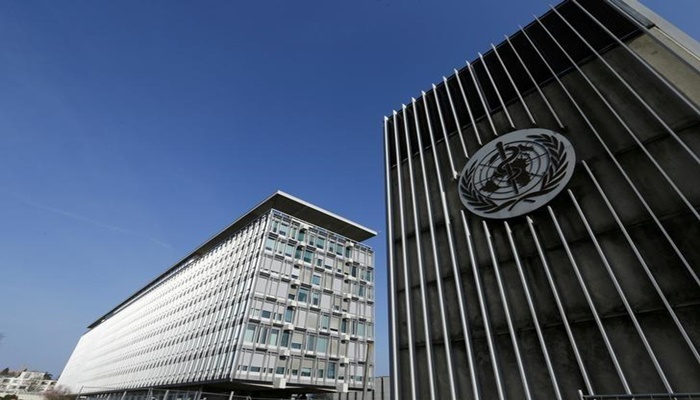WHO: COVID-19 burden lessens in Africa, despite 14% spike in deaths
World Health Organisation (WHO) has said that while Africa is witnessing its lowest level of new COVID-19 cases since the onset of the pandemic, deaths rose by 14 per cent in the week ending November, 27.
It said that the continent recorded the four-week long rise until November, 20 when the number of new cases dropped slightly over the past two weeks ending on December 2, thus breaking the upward trend.
It further said that only 26 percent of Africans are fully vaccinated against COVID-19.
With regard to disease infection spread, WHO said the region has so far this year reported 106 outbreaks and health emergencies linked to humanitarian crises, almost 17 per cent more compared with 2021.
The organisation also said that Africa has made huge improvements in genomic sequencing, noting that around 105 000 sequences were produced in 2022 compared with 58, 610 the year before.
In a press statement issued Brazzaville, Congo by the WHO Regional Director for Africa, Dr Matshidiso Moeti, the organisation said a recent four-week rise—the first such sustained increase in four months—underscored the criticality of maintaining vigilance as the end-year holiday seasons sets in.
WHO however said: ”the new cases reported in late November account for less than 10 percent of cases recorded in the same period in 2021 and 2020.
“While deaths rose by 14 percent in the week ending on November 27 from the week before, they were low at 53—approximately 4% of the deaths recorded in the same period in 2021 and 2020. The current COVID-19 caseload is not exerting any significant strain on health facilities, with hospitalizations remaining low.
“Despite the recent uptick, there is hope that Africa will be spared the challenges of the previous two years when surging cases and deaths withered normal life and caused deep devastation.
WHO also said that while the current trends keep the pandemic under control, it was carefully monitoring its evolution, adding that countries must remain vigilant, continue to increase vaccination coverage and be ready to adopt more stringent preventive measures, if necessary,” she said.
Moeti said that investments made in the COVID-19 fight over the last three years are paying off, with the region better able to cope with the virus and its health emergency response systems bolstered.”
She said that in 2022, the overall decreasing pandemic burden in Africa was easing pressure on national public health resources, allowing countries to further bolster disrupted health services and increase focus on other health priorities such as routine immunization, disease surveillance and response to other outbreaks.
She said that with the revamped surveillance, the region has so far this year reported 106 outbreaks and health emergencies linked to humanitarian crises, almost 17 percent more compared with 2021.
“Around 25 vaccine-preventable disease outbreaks have also been reported in 2022. Thirteen were reported in 2020 and 19 in 2021, according to a WHO tally.
“Response to the COVID-19 the pandemic across Africa has helped countries to reinforce key public health emergency response measures including diagnosis and testing, critical care, and infection prevention and control. The improvements can help the continent handle not only COVID-19 but other outbreaks”.
WHO noted that at the on the onset of the pandemic, the average number of intensive care unit beds was around 3 per (100000) people, below the WHO recommendation of a minimum of 5 per ,(100 000).
According to WHO, with the support of partners, 70 per cent of countries in the region have met the standard of intensive care unit beds.
“Medical oxygen production has also been boosted. Medical oxygen production has also been boosted. In 2019, the continent had 2600 oxygen concentrators and now has 6901.
“In addition, WHO has supported nine countries to set up and maintain oxygen production plants, increasing the region’s production by 7.9 million litres a day—enough to treat 1130 critically care patients per day. “While care of critically ill COVID-19 patients has improved, countries need to further strengthen their capacities to cope with a sudden surge in cases sparked by a new lethal and transmissible variant.
‘A WHO assessment of more than 5100 health facilities in 18 countries on 14 infection prevention and control indicators (such as COVID-19 screening at facility entrance, isolation of suspected cases and use of personal protective equipment) found a significant improvement, with a score of 67 percent in November 2022, up from 54 percent in July 2020.
“WHO recommends that facilities score above 75 percent and with sustained effort this is possible in 2023. Strong infection, prevention and control in health facilities is critical for preventing the spread of a range infectious pathogens such as Ebola and COVID-19,” she said.
“With new cases at a low level in recent months testing and genomic sequencing have dropped.
“As part of a move to integrate COVID-19 into routine health services, WHO is recommending that countries adopt testing strategies that focus on detecting new cases, particularly in vulnerable populations such as the elderly or those with comorbidities to reduce severe disease; and detecting new cases to limit transmission and to monitor viral epidemiology and evolution.”




